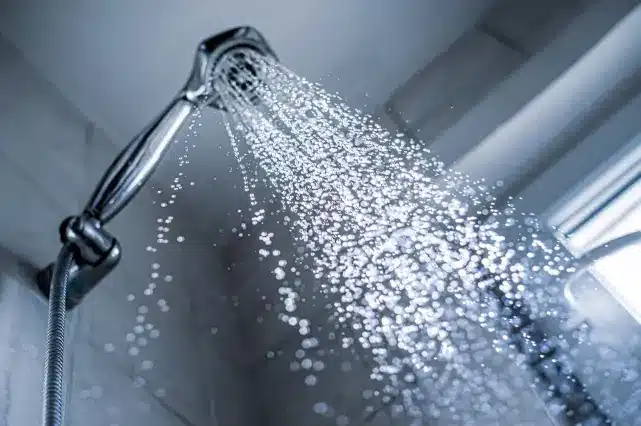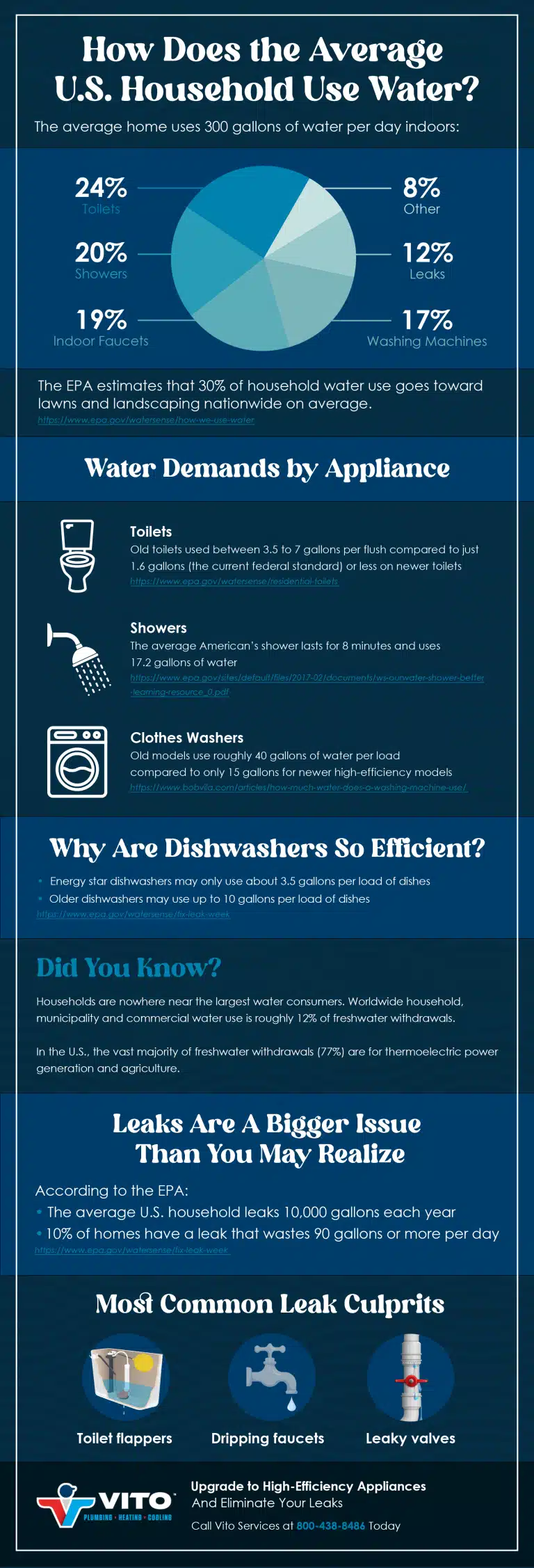
According to the Environmental Protection Agency (EPA), the average family in the U.S. uses about 300 gallons of water each day. However, the word "average" does a lot of work in their calculations – very few households truly exemplify the "average" when considering this entire diverse country. Your household might be using far more or far less depending on how many people are in your household, the size and type of your lawn, whether you take long or short showers, the flow rate of your fixtures and toilets, etc.
A lot can still be learned by looking at the average. For example, most people are all too familiar with public service campaigns about water conservation – even in states like Maryland that don't traditionally have severe water shortages. You would be forgiven for assuming the average person's choices and personal habits matter – and to a certain extent they do.
In the aggregate, however, households are not the major consumers of fresh water in the U.S. Recently published analysis of U.S. freshwater withdrawals tells us:
- 45 percent – the largest consumer of freshwater – is from thermoelectric power
- 32 percent – by far the second largest consumer – is agriculture
- Only 12 percent is for "public supply" (i.e., households, municipal water consumption)
Only a very small percentage is "self-supplied" – or well water. About five percent of freshwater is self-supplied for industrial purposes and about one percent of freshwater is self-supplied for domestic consumption, or homes with wells.
WHAT ARE THE COMMON VARIABLES IN PER CAPITA WATER CONSUMPTION?
The amount of water an average person or family uses daily can vary greatly depending on factors such as location, lifestyle and household size. In the United States, the average person uses approximately 80 to 100 gallons (300 to 380 liters) of water per day. This includes water used for drinking, cooking, bathing, flushing toilets, washing clothes and dishes and outdoor activities like gardening or lawn care.
For a family, the daily water usage can be calculated by multiplying the average per person usage by the number of family members. For instance, a family of four in the United States would typically use between 320-400 gallons (1,200-1,520 liters) of water per day.
It is essential to note that these figures are only approximate averages, and individual or family water consumption can differ based on various factors, such as water conservation habits, appliances used and regional differences in water usage patterns.
HOW DOES MARYLAND, VIRGINIA AND D.C. STACK UP TO THE REST OF THE COUNTRY?
Maryland is actually one of the largest gallons-per-day users on the East Coast at between 101 to 125 gallons per day. This is a similar range to West Coast states like California, Oregon and Washington. Virginia is on the lower end at 0 to 75 gallons per day domestic water consumption.

LEAKS ARE AN EVEN MORE SERIOUS WATER WASTER THAN STATS MIGHT SUGGEST
The EPA has some truly worrying leak water consumption figures. They suggest the average household can waste 180 gallons of water each day (9,400 gallons per year) on household leaks. In total that's an estimated 900 billion gallons of water each year. If you're reading this and think that sounds high or you know your home doesn't have leaks – you're not alone. Many homes don't have leaky faucets, fixtures or pipes, but the total amount is averaged among all households. That means many of the actual leaks are far higher than this national average might lead you to suspect.
According to the EPA, about 10 percent of homes that leak more than 90 gallons per day – which means 90 percent of homes either don't have leaks or have more minor leakage issues.
IS YOUR HOME PART OF THE PROBLEM?
You might be confident your home doesn't have leaks – but have you checked lately? Homeowners who pay attention to their water bill each month may get tipped off to leaks when their household's consumption suddenly jumps up. According to the EPA, if a family of four is using more than 12,000 gallons in January or February, there is very likely a serious leak on the property.
If you're not sure whether your home has leaks or not, it's likely worth your time to do a quick investigation.
One of the easiest and most reliable ways to check for leaks is by getting a baseline of your water meter. Check your meter at some point when you know no one in the house is going to be using water for at least two hours. Check the meter again at the end of the two-hour period. If the meter went up, there's likely a leak on your property.
You can check for toilet leaks by putting a drop of food coloring in the tank. Check the toilet's bowl after about 10 minutes to see if any color leaked through. Flush as soon as you've conducted the experiment to prevent staining.
There are also a variety of tests you can do on fixtures, like listening for drips or running toilets and addressing those types of small leaks when you notice them, or just by checking in vanities for signs of water damage or puddles. You can also check showers and tubs by seeing if water is still coming out of the tub spout once the shower turns on (which indicates the spout diverter needs to be replaced).
CONSERVE WATER IN YOUR MARYLAND HOME
If you want to be part of the water conservation solution, contact Vito Services at 301-315-6100 . We can install all types of low-flow fixtures that perform just as well as traditional appliances and fixtures in addition to eliminating leaks and improving the quality of your home's water. Our plumbers are always ready to help our neighbors conserve water and protect their home's plumbing.








